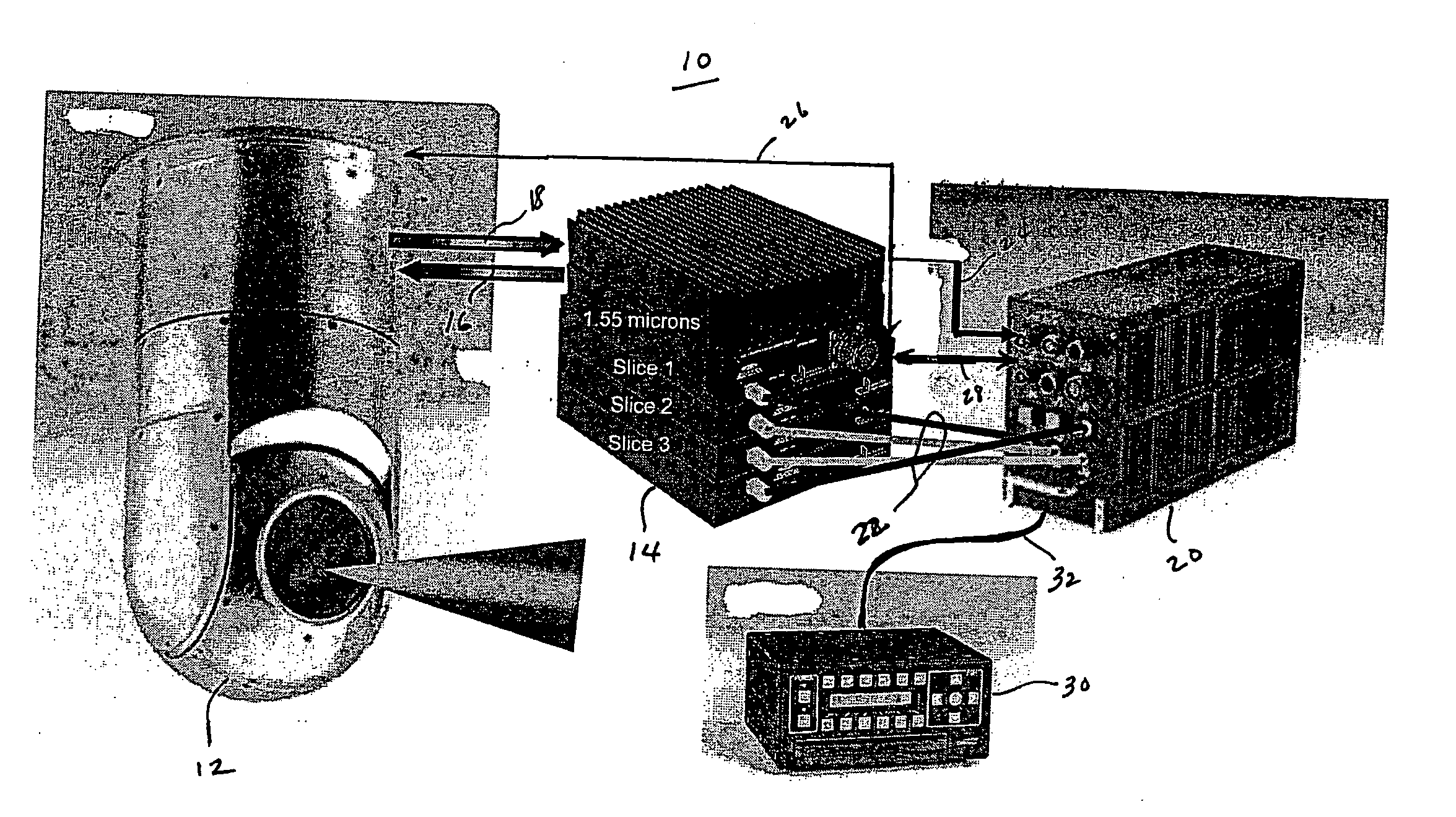System and method of identifying an object in a laser beam illuminated scene based on material types
a laser beam and illumination scene technology, applied in the direction of optical radiation measurement, instruments, using reradiation, etc., can solve the problem that most sophisticated passive ir sensors and active radars cannot automatically classify a wide range of targets or such a diverse area, and the information on the type of thermal gradient detected is not necessarily availabl
- Summary
- Abstract
- Description
- Claims
- Application Information
AI Technical Summary
Benefits of technology
Problems solved by technology
Method used
Image
Examples
Embodiment Construction
[0024] One aspect of the present invention involves the seamless data fusion of range-resolved laser data imagery with multi-spectral near-infrared (IR) reflectance data. Unlike passive remote sensors, the multi-spectral reflectance data image is formed through active laser illumination of a target area simultaneously at a plurality of discrete wavelengths or wavelength bands. By exploiting the near-infrared absorption and reflectance characteristics of different materials using an active laser source, dependencies on sunlight are eliminated. The laser system of the present invention will be of sufficient spatial and spectral resolution to resolve the fine material details such as the metal barrel of a rifle against the clothing fabric of a non-combatant hundreds of meters down range. This may be accomplished for stationary and moving scenarios.
[0025] In the present system, a single, compact scanning laser system will simultaneously emit pulses of laser light at a plurality of wave...
PUM
| Property | Measurement | Unit |
|---|---|---|
| wavelength | aaaaa | aaaaa |
| angle | aaaaa | aaaaa |
| wavelengths | aaaaa | aaaaa |
Abstract
Description
Claims
Application Information
 Login to View More
Login to View More - R&D
- Intellectual Property
- Life Sciences
- Materials
- Tech Scout
- Unparalleled Data Quality
- Higher Quality Content
- 60% Fewer Hallucinations
Browse by: Latest US Patents, China's latest patents, Technical Efficacy Thesaurus, Application Domain, Technology Topic, Popular Technical Reports.
© 2025 PatSnap. All rights reserved.Legal|Privacy policy|Modern Slavery Act Transparency Statement|Sitemap|About US| Contact US: help@patsnap.com



